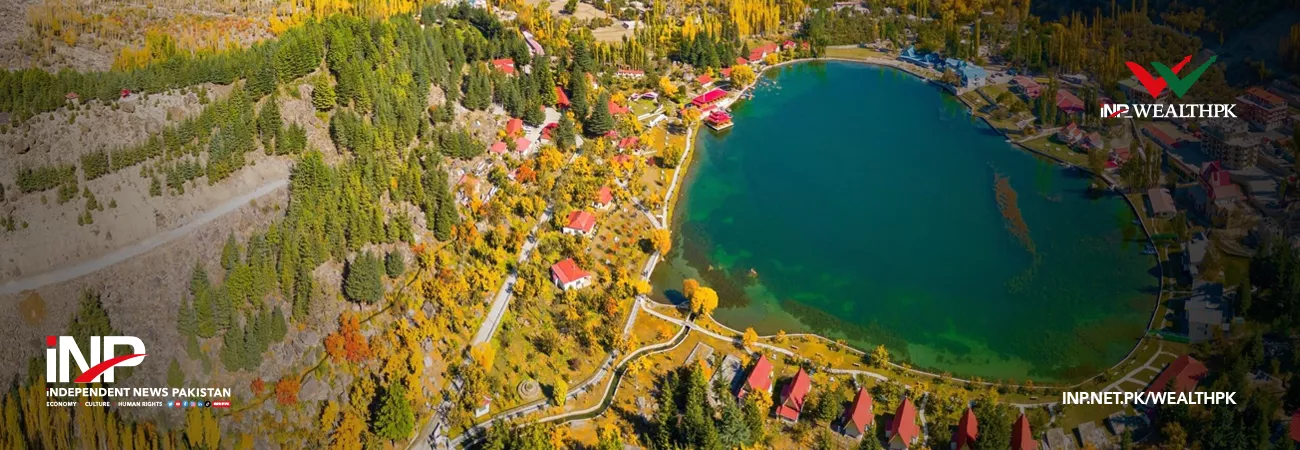INP-WealthPk
Faiza Tehseen
The earthen crypts of Gilgit-Baltistan province of Pakistan are rich in Platinum Group Metals (PGMs) that can be a potential source of foreign exchange earnings for the country, reports WealthPK. “About 200 kgs of different PGM group metals can be extracted from 200 tons of raw material a month, and this processing rate is enough to tackle the country’s financial crisis,” said Principal Geologist in the Global Mining Company and former GM Geology in the Pakistan Mineral Development Corporation (PMDC) Muhammad Yaqub Shah in a discussion with WealthPK about the strategic minerals.
Yaqub said he had worked in Gilgit-Baltistan as a field geologist in different positions for more than 20 years. He said in every developed country, the list of PGMs or strategic minerals was periodically notified officially. These minerals are classified as prioritized over all other ordinary minerals. Sometimes, these precious metals are stockpiled or traded by countries but only under strict official control. No private body is allowed to trade them. Unfortunately, in Pakistan no such type of official activity is ever performed in Pakistan.
The PGMs consist of six precious but rare earth metals i.e., 1) Osmium Os, 2) Rutanium Ru, 3) Platinum Pt, 4) Palladium Pd, 5) Iridium Ir6) Rhodium Rh, etc. The industrial application of every mineral is separate. In the upper crust of the earth, the average distribution of PGMs is different but mostly they are found in the quantity of 0.0005 parts per million (PPM is gram per ton in a rock). Their concentration of 5 grams per ton is considered economic.
In the international market, they are sold at a price. During the month of July 2022, the rates of different PGMs were – Osmium US$14 per gram, Ruthenium US$22 per gram, Platinum US$33 per gram, Palladium US$66 per gram (mostly its price is equal to gold with little difference), Iridium US$176 per gram, and Rhodium US$453 per gram.
Yaqub also discussed with WealthPK about the successful exploration chapter of PGMs in GB named ‘Geo-Chemical exploration and evaluation of gold, base metals, Northern Areas (NA), Pakistan”. It was executed from 1992 to 2001 by the Pakistan Mineral Development Corporation (PMDC) with the technical and partly funded coordination of the Australian government.
After a deep analysis, Australian experts recommended Gilgit-Baltistan for further proceedings. They extensively trained the Pakistani experts from different geological departments, such as Pakistan Minerals Development Company (PMDC) and Geological Survey of Pakistan (GSP). At the end of training, Australia deployed two experts in Pakistan to lead the project. During 10 years, 50,000 sq. km area out of the total area of 70,000 sq. km was fully explored. The remaining area could not be explored due to regular snowfall on glaciers. It was impossible to collect samples from there.
About 4,096 samples were collected from 2,296 sites of GB and were analyzed in different labs in Pakistan. 1,379 samples were sent to Ultra Trace Laboratories in Perth, Western Australia. They analyzed 34 elements and, on special request, two elements from the platinoid group of minerals i.e., platinum and palladium. Both were found at 2ppm. Concerning the platinoid group, more than 5 grams per ton show a high potential. 112 samples from different areas have more than 10 grams of platinoids. At about 34 locations, around 10 to 60 grams of gold is also found with platinoids.
Gold and platinum can be found at 28 places through mechanized panning or by direct sand washing. Sometimes, platinoids are found in the quantity of 1,075 grams per ton. Panned concentrates are such valuables in the form of platinoids, which are extracted without mining, processing, crushing, and grounding even. Yaqub further said that a specific geological environment required for formation of Platinum Group Metals (PGMs) was available in GB, which was a unique phenomenon around the globe.
Platinum and other PGEs are widely used in many industrial applications i.e., pharmaceutical industry (to manufacture medical implants, i.e., pacemakers, production of anti-cancer drugs, etc), to manufacture jewellery, to make high-quality alloys for further processing, petrochemical industry, for strategic purposes, manufacturing of aircraft, electronic industry, used in computer hard disks, hybridized integrated circuits, glass manufacturing, fiberglass, LEDs and multilayer ceramic capacitors. Alloys of platinum or platinum/rhodium are used to produce nitric acid. Some PGMs i.e., platinum, palladium, and rhodium in the form of coins and bars are also used as investment and trade commodities on major exchanges.
Credit: Independent News Pakistan-WealthPk




